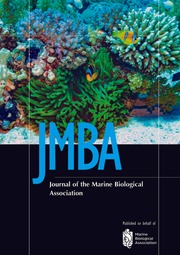Article contents
A comparison of pigmentation features among North Atlantic killer whale (Orcinus orca) populations
Published online by Cambridge University Press: 29 April 2014
Abstract
Here we present a comparison of saddle and eye patch patterns of killer whales from Norwegian, Icelandic, British, Spanish and Greenlandic waters. We found only a small amount of variation in saddle patch shapes, which may reflect a recent phylogenetic divergence from the most recent common ancestor. Eye patch shapes were more variable than saddle patches in small details. Most individuals had eye patches with parallel orientation, with the exception of a small group of killer whales from the Hebrides, which, as previously reported, had sloping eye patches that sloped downward at the posterior end. This differentiation in pigmentation patterns of the Hebridean killer whales from neighbouring populations could reflect one or more of several evolutionary processes, including a deeper phylogenetic divergence, low gene flow with other local populations and drift.
- Type
- Research Article
- Information
- Journal of the Marine Biological Association of the United Kingdom , Volume 94 , Issue 6 , September 2014 , pp. 1335 - 1341
- Copyright
- Copyright © Marine Biological Association of the United Kingdom 2014
References
REFERENCES
- 7
- Cited by


